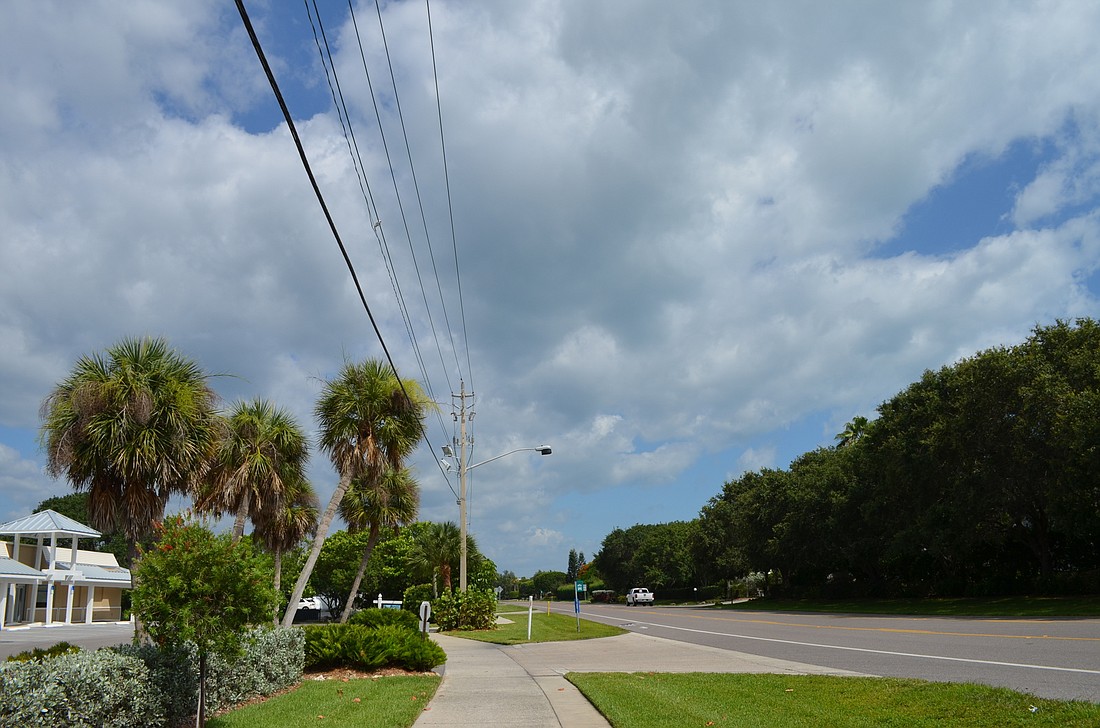- April 22, 2024
-
-
Loading

Loading

Will the funding setup for the underground utilities projects bury the proposal?
Concern about the setup grows deeper even as the Longboat Key Town Commission approved a Gulf of Mexico Drive undergrounding referendum question on first reading Monday at a special meeting.
“I believe strongly the present proposal is doomed for failure,” said Islander Club resident and former Vice Mayor David Brenner. “Ballot one is good for me but ballot two is another story.”
Brenner said the real benefit to the entire town is all of the utilities being buried islandwide.
“Should I care what the other neighborhoods decide?” Brenner said. “Yes. The real benefit to me is having a single community (with buried utilities).”
A motion for the referendum on first reading passed by a 6-1 vote, with Commissioner Pat Zunz voting against it. The referendum question now goes to a special meeting June 29. If it’s passed on second reading, the island’s entire electorate will decide in the Nov. 3 election whether to approve a Gulf of Mexico Drive project with a pricetag that's now $25.25 million when a 20% construction contingency factor is included. The previous estimate for the project last week was $23.4 million.
For the second undergrounding project, which will go before voters only if the first referendum passes, only property owners that don’t have utilities underground yet will get a ballot to decide if they want to pay their share of the $20.5 million it will cost to bury the rest of the island. The previous estimate for that project was $18.8 million.
Brenner suggested it should be one islandwide referendum question and not two separate questions.
“I’m happy to (help) pay for all of it,” Brenner said. “I urge you to slow down and get the voters on board, because they aren’t now."
The town had the option of funding the projects through ad valorem (uniform millage rate funded through property taxes like the beach millage districts) or non ad valorem assessments (property owner assessments collected through tax bills).
Non-ad valorem assessments are based on the benefit each property receives and a methodology was performed on the town’s 10,038 properties over the last three months to determine how much each property would pay for the debt over both 20 and 30 years.
Although the commission is pursuing the non-ad valorem option out of concern about fairness for those who already have utilities undergrounding, some believe the process won’t work.
According to the current plan, the owner of a Beachplace condominium on the Gulf valued at $526,000 would pay nothing for the second referendum question to bury underground utilities because the condos already have buried power lines. But the owner of a Twin Shores mobile home across the street valued at $220,000 is responsible for paying $320.57 a year for 30 years to bury its overhead power lines.
“If I lived in a trailer park, I’m getting socked,” Brenner said. “Many of those people are going to say 'I can’t afford this.' You’re rushing to judgment and making a huge mistake.”
Zunz was the lone commissioner who wanted to reconsider of the current path.
“Keep in mind that if the islandwide costs were to be divided evenly among the 10,000-plus owners, the cost to each would be approximately $4,000,” Zunz said.
North end residents Gene Jaleski, Larry Grossman and John Summer also urged for reconsideration.
“You’re applying the wrong methodology,” Jaleski said. “Many people are asking, ‘Why am I taxed more?’”
Summers said the funding mechanisms don’t seem fair and that he prefers an ad valorem funding option.
“If you can’t make a solid argument to convince people this makes sense, don’t do it,” Summers said. “You need a common sense argument people can understand. Delay the vote.”
Zunz called a motion to postpone first reading until the funding options could be discussed further but didn’t receive a second from another commissioner.
Country Club Shores resident Bob Gault, a proponent of undergrounding the utilities using the current non ad-valorem assessment, maintains the commission is proceeding in the fairest way possible.
“Many other municipalities have successfully utilized this reasonable assessment method due to its higher level of fairness with analysis of every single property,” Gault said after the meeting. “It is critical that Longboat compete in this 21st century real estate market. We must keep in mind that this project must be successful or we face the installation and unsightliness of more, taller, wider hurricane-hardened utility poles for years to come.”
If approved on second reading at the end of the month and if the referendum passes in November, assessments for property owners would be finalized by December. Then, survey and engineering design work would commence in January. Collection of assessments would begin in 2016 and construction could begin in the spring of 2017.
If the Gulf of Mexico Drive project passes in November, a mail-only ballot will be held in April for the second referendum. Ballots will be sent only to affected overhead wire property owners.